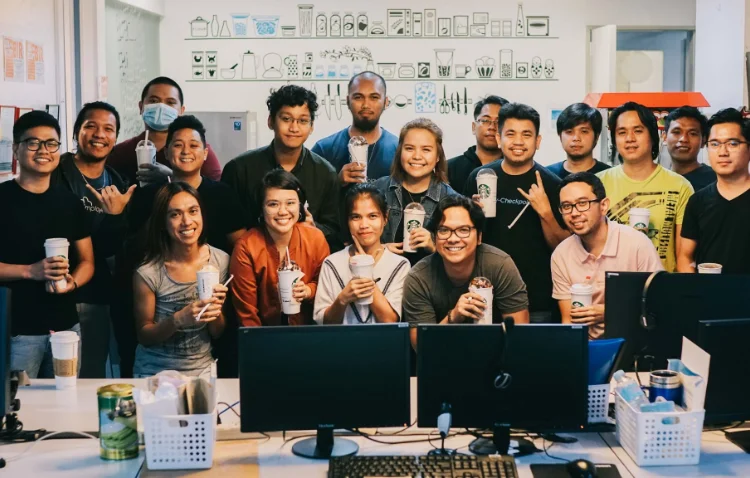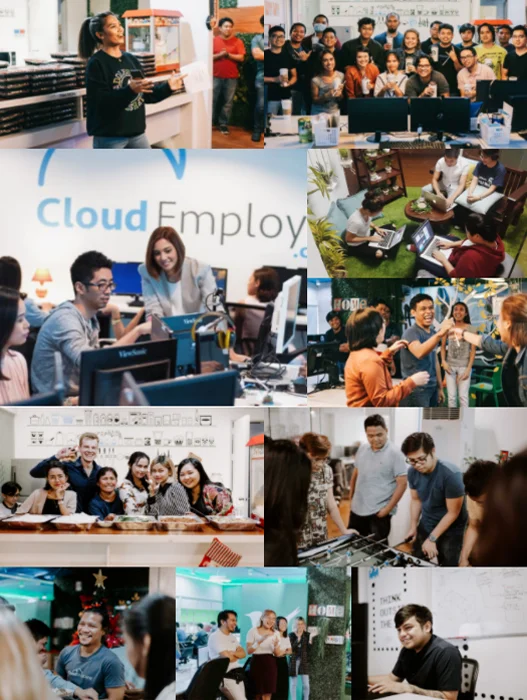Would you like a faster launch of your product on the market and boost productivity in the process?
Containers are here to help you!
The ability of containers to provide portability between multiple platforms and clouds, and to deliver efficiency and greater resource utilization makes them ideal for seamless development.
With their easy-to-use microservice-based architecture, the development and deployment processes become a matter of minutes.
By combining containers with microservices, a product can be developed quickly and marketed quickly.
Container orchestration has played a role in improving software delivery in DevOps.
Containerization keeps us one step ahead of the curve, serving the ever-changing market needs and standards.
Technical progress has no looking back in the current market, and containerization opens a window of various opportunities to help your customers with benefits like efficiency, portability, speed, scalability, and enhanced security.
To remain competitive and achieve the highest scalability, organizations are taking advantage of the benefits of containerization.

Expenditures on infrastructure, software, and other unused resources cost billions of dollars.
Containerization helps reduce these losses.
A container holds a specific application along with only the associated binaries or libraries.
Additionally, containers allow more number of containers to run simultaneously without the need for servers.
By 2023, 70% of organizations will run more than three containerized applications in production, according to Gartner statistics.
Aside from organizations, containers are popular with developers since they facilitate frictionless migration to microservice architecture.
Containers facilitate developers with confidence to scale applications without sacrificing stability or robustness.
They will be able to manage the development process more easily with containers.
Microservices, containerization, and Kubernetes are top innovations in digital transformation.
These technologies are increasingly being used by companies to build and deploy their applications.
Find out which containerization trends will be popular in 2022.
1. Stateful applications and persistence
Kubernetes and containers are being adopted by enterprises in order to increase agility and stability.
Kubernetes provides stateful applications with persistent storage, so enterprises are trying to leverage that when deploying applications on the platform.
Using containers to compile and build microservice applications accelerated microservice application development as developers could push code modifications frequently with no delay.
With Kubernetes, developers can deploy their applications to multiple environments without worrying about infrastructure and compatibility issues.
The following are the benefits cross-functional teams are able to leverage with Kubernetes:
- Portability
By using containers, applications can be deployed across many environments without worrying about infrastructure or platforms. They also offer a common set of APIs across cloud and on-premise environments.
- Automation
This platform scales effectively with reproducible results and integrates seamlessly with Blue-green deployments with its self-healing capabilities and API-driven interfaces.
- Resilient
Applications can be restarted on a different node for the sake of troubleshooting when containerization is used.
- Immutable
As a result of their immutability, containerized applications simplify patching, updating, and rollback operations.
Kubernetes was primarily used for projects that had mostly stateless microservices.
Stateful applications did not fall behind.
Enterprises are increasingly seeking to containerize their stateful applications by using innovative tools and solutions in Kubernetes.
2. SecOps
By combining automation and IT security and operational tools, SecOps helps to enhance business agility and reduce risks.
In SecOps, security, and IT operations teams work together more effectively.
How does SecOps work?

Your developers can build, share, and deploy their applications with containers, and most of them want to build applications fast and easily.
Many times the process leaves out security and authenticity.
This often results in risk.
To be able to control the source of an image and what is in an image, you need to establish a predefined policy and guidelines to control the source of the images and libraries that are fed into the containers.
You can accomplish this by:
- In the development and deployment processes, establishing a point of control allows for images and libraries to be used only from a trusted source and with the appropriate authentication.
- The provision of a list of trusted sources
One way to avoid vulnerabilities is to eliminate them before deploying containers.
Considering that container images are built from a base image and other layers, they rarely start from scratch, so there is a risk that the base image contains outdated code, thus posing a threat to the application.
It is possible to eliminate vulnerabilities before the code gets into the image by using code-level vulnerability analysis tools.
You can only do this if you have complete upstream control, and with containers, you don't have that.
In order to prevent vulnerable containers from being deployed on your production host, control the deployment process and enforce vulnerability policies.
As part of CIS hardening guidelines, you can also reduce runtime risks by using hardening practices on container images, daemons, and host environments.
As part of SecOps, you are responsible for ensuring a secure development and deployment process across multiple clouds and data centers.
Benefits:
- Compliance with appropriate standards and security policies is validated and enforced automatically
- Procedures for key security automation
- Any code modification is subject to the deployment rules
- Errors are fewer in configuration
- Vulnerabilities should be managed on a proactive basis
3. DevOps
By using DevOps, development and operations can collaborate more closely while focusing on rapid IT delivery.
Using containers across multiple environments makes DevOps easy and convenient.
A container enables you to run your applications across multiple environments in an efficient and bug-free manner.
Occasionally, there are issues when moving applications between computing environments.
There are other problems in addition to application deployments, such as security policies and storage types.
When this occurs, containers come to your rescue! It is possible to run applications in all environments seamlessly with containers by giving a feel of the previous environment.
4. Kubernetes
Containerized workloads are managed with Kubernetes, or k8, using an open-source, portable, extensible platform that enables automated application deployment, scaling, and management.
Features of Kubernetes:
- Automatic bin packing
The Kubernetes cluster can be used to run containers. Each container needs a certain amount of CPU and RAM. Kubernetes perfectly fits your containers onto your nodes to make the best use of your resources.
- Sensitive information and configuration management
Sensitive information can easily be managed with Kubernetes.
With Kubernetes, passwords, OAuth tokens, and SSH keys are stored and managed securely.
This eliminates the need to rebuild the container images and expose the information when deploying and updating the sensitive information.
- Self-healing
Container management relies heavily on Kubernetes.
Kubernetes restarts, kill, or replaces a container if it fails to run an application, as required to prevent downtime.
- Load balancing
By facilitating load balancing and distributing network traffic, Kubernetes maintains deployment stability during high traffic levels.
- Storage orchestration
By allowing you to automate the mounting of your storage system, Kubernetes simplifies automatic rollouts and rollbacks.
- Assigning states
Kubernetes can help describe the desired state of your containers.
It can control how they are changed from the original state to the desired state.
5. AIOps or Artificial Intelligence Operations
Are you looking for ways to enhance your IT operations?

AIOps, an application of artificial intelligence (AI), optimizes IT operations and eases IT infrastructure challenges with the use of big data, analytics, and machine learning techniques.
In 2020, it was all about transitioning to a cloud-based infrastructure.
Cloud applications produce huge amounts of data, and this keeps developing.
The traditional IT management solutions can't keep up with the increasing data volume.
They can't sort and correlate data across diverse environments.
Their services do not provide real-time data insights and predictions required for the IT team to quickly respond to issues and stand out from their competitors.
AIOps is here to save the day!

Achieving continuous uptime and efficiency as well as handling large volumes of data will be the key to an organization’s success in 2021.
As a result, container-centric architectures should be framed as the main focus.
A cloud consulting company can provide cloud consulting services for you.
With AIOps, performance data and dependencies across all environments are seen in depth.
As a result, it can be used to extract events that cause slowdowns and outages.
AIOps can be utilized with Kubernetes to determine the root cause of an issue based on the data retrieved.
When the data is identified, it alerts the IT team about the issues, the root causes of the problems, and the possible solution.
Features:
- Locating the underlying causes of these issues.
- The IT team gets immediate alerts about the causes of problems and can remediate them quickly.
- Improving the efficiency and intelligence of slowdowns and outages.
- Data collection continues to grow.
- Gathering the collected data and aggregating it.
- Data clustering identifies patterns and events that may cause problems.
6. Using containers to manage IoT proliferation at the network edge
Smart objects such as embedded devices, smartphones, sensors, and many more are involved in the Internet of Things.
The amounts of data shared from these objects are huge, and they do not impose any geographical restrictions.
Due to the constraints of devices, managing and processing a huge volume of data can be challenging.
This large volume of data may be managed by cloud-based infrastructure, but the response time is slow and the bandwidth consumption is high.
The use of container technology at the network edge can support data processing and service availability for users.
It is mostly focused on enhancing access to data and consuming bandwidth while transferring processing power to the edge of the network.
The importance of infrastructure technology for the edges becomes evident as workloads run at the edges.
With their lightweight feature, containers are perfect for running on-edge devices.
It is quick and agile thanks to OS-level virtualization, which shares the OS with all applications.
Machine learning uses containers for a variety of reasons, one of them being that containers allow legacy services to connect to cloud services like AI/ML for quick computation.
By deploying workloads closer to your end-users, you get reduced latency, enhanced scalability, and reduced network costs by managing them in containers.
7. Service Mesh Security for Containers
The purpose of a service mesh is to manage network traffic and provide seamless service-to-service communication.
Using service mesh, we will experience fast, reliable, and secure communication between containerized application infrastructures, due to its transparency to microservices.
With service mesh, it is easy to integrate REST, HTTP, HTTP/2, and other protocols across development and staging environments, as well as production environments such as IaaS, PaaS, and CaaS.
As a service mesh, mTLS is applied automatically to authenticate and secure communications between microservices without requiring any configuration or changes to the code.
By implementing dynamic network policies with service mesh, operators can control traffic inside of deployments.
This allows them to implement advanced configurations such as blue/green deployments and canary releases.
By implementing dynamic network policies with service mesh, operators can control traffic inside of deployments.
This allows them to implement advanced configurations such as blue/green deployments and canary releases.
Features:
- Observability
- Traceability
- Authentication
- Authorization
- Service discovery
- Load balancing
- Failure recovery
Throughout a service mesh, an instance of the proxy is used for every instance of the service.
The container cluster has these proxy instances placed next to it, facilitating the monitoring and management of inter-service communications.
Why DevOps should use containers?

Using containers offers the following benefits to testing and deploying applications across multiple environments:
-
Production
Containers are easy to deploy, patch, and scale applications.
-
Less overhead
Compared to virtual machines or machine environments, containers require fewer resources.
This is because they lack images from the operating system.
-
Flexibility
Container programs can be deployed to various operating systems and hardware platforms quickly.
-
Consistent operations
Depending on the application requirements, the container can provide many software dependencies.
These dependencies are consistent regardless of the application deployment method.
Work with world leading tech businesses
We connect high-performing software engineer talent in the Philippines with some of the world’s leading and most innovative Tech companies.
Submit CV













